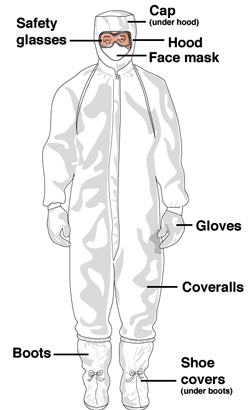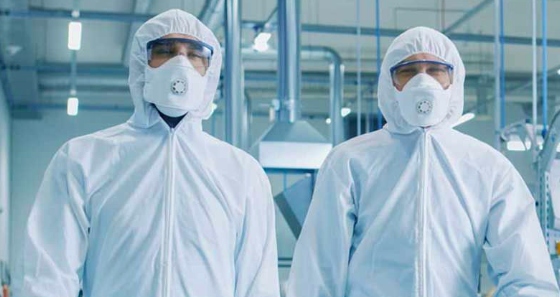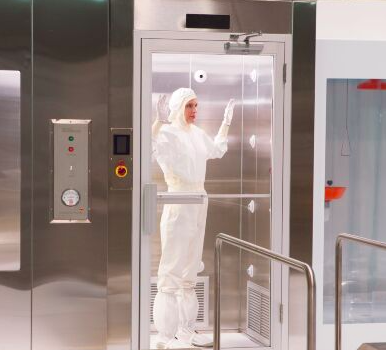Everyone has seen those scary outfits in the sci-fi movies with the full-body suits accessorized with gloves, long boots, and goggles. The only thing you can really ever see is the actors’ eyes. Despite their eerie connotation thanks to the entertainment industry, these garments serve a vital purpose in clean room safety, and here’s why:
Clean rooms are only as effective as the people working within them. Human beings are a significant source of contamination, and their clothing is one of the most significant contributors. Therefore, clean room garments are critical to maintaining a controlled environment. In this blog, we’ll take a closer look at how clean room garments are designed, what materials are used, and why they are essential to maintaining a controlled environment.
Design

Clean room garments are designed to minimize the number of particles released into the environment. The design of clean room garments includes the coverall, hood, booties, gloves, and mask. The coverall is designed to cover the entire body, including the head, to prevent particles from the skin and hair from contaminating the environment. The hood, booties, gloves, and mask are designed to prevent particles from the head, feet, hands, and mouth from contaminating the environment.
Clean room garments are also designed to be easy to put on and take off to minimize the risk of contamination during the dressing and undressing process. They are typically one-time use and are disposed of after use to minimize the risk of contamination.
Materials
Clean room garments are made of materials that do not shed particles, are non-porous, and are easy to clean. The materials used in clean room garments depend on the classification of the clean room, ranging from ISO Class 1 to ISO Class 9.
These outfits are made of synthetic materials such as polyester, nylon, or polypropylene which are non-shedding and resistant to chemicals and disinfectants used for cleaning. The materials used in clean room garments are also anti-static to prevent the buildup of static electricity, which can attract and hold particles.
In addition to the materials used in clean room garments, the manufacturing process is also critical to minimize the risk of contamination. The manufacturing process should be conducted in a clean room environment, and the garments should be packaged and stored in a clean environment to ensure that they remain clean until use.
Importance
Although it may not seem like we obtain a plethora of bacteria and contaminants, the human body is a significant source of contamination in these environments. People shed millions of skin cells every day even though you cannot see them, and these cells can carry bacteria and other microorganisms that can cause contamination in sensitive environments. Even a single cough or sneeze can release thousands of droplets that may contain harmful bacteria or viruses, and that’s why the suits that clean room personnel wear are so important. Humans account for 75% to 80% of contamination that occurs in clean rooms, so suiting up in not a step worth missing.

Clean room outfits may resemble the hazmat suits seen in sci-fi movies, but their purpose is vastly different. While hazmat suits are typically designed to protect wearers from highly toxic and dangerous materials, clean room outfits serve to keep the environment free of contamination. Although these outfits may look intimidating, they are critical in maintaining the strict standards necessary for sensitive processes such as semiconductor manufacturing and biotech research. So, don’t let the appearance of clean room garments fool you – they may look daunting, but they play a crucial role in ensuring the safety and integrity of the products and research being produced. So next time you watch a movie with the scary people dealing with chemicals and and other unknown substances, just keep in mind that they’re just protecting themselves and their surroundings.



